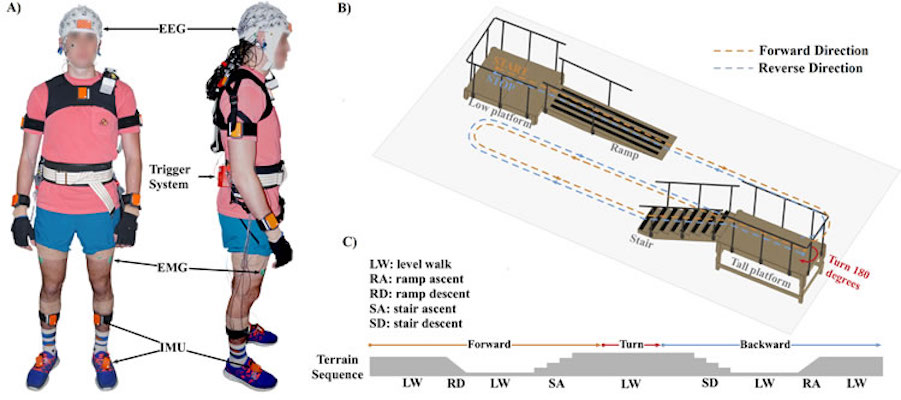Earlier this year, University of Houston’s Jose Luis Contreras-Vidal developed a closed-loop BCI/EEG/VR/physical therapy system to control gait as part of a stroke/spinal cord injury rehab program. The goal was to promote and enhance cortical involvement during walking.
In a study, 8 subjects walked on a treadmill while watching an avatar and wearing a 64 channel EEG headset and motion sensors at the hip, knee and ankle.
The avatar was first activated by the motion sensors, allowing its movement to precisely mimic that of the test subject. It was then controlled by the brain-computer interface, although this was less precise than the movement with the motion sensors. Contreras-Vidal believes that as subjects learn how to use the interface, the result will be closer to that of the sensors. The researchers reported increased activity in the posterior parietal cortex and the inferior parietal lobe, along with increased involvement of the anterior cingulate cortex.
The team built on this reasearch to demonstrate how brain activity is used to identify different terrains to develop prosthetics that automatically adjust to changing ground conditions in real time.
Click to view University of Houston video
Join ApplySci at Wearable Tech + Digital Health + Neurotech Silicon Valley on February 26-27, 2018 at Stanford University. Speakers include: Vinod Khosla – Justin Sanchez – Brian Otis – Bryan Johnson – Zhenan Bao – Nathan Intrator – Carla Pugh – Jamshid Ghajar – Mark Kendall – Robert Greenberg – Darin Okuda – Jason Heikenfeld – Bob Knight – Phillip Alvelda – Paul Nuyujukian – Peter Fischer – Tony Chahine – Shahin Farshchi – Ambar Bhattacharyya – Adam D’Augelli – Juan-Pablo Mas – Michael Eggleston – Walter Greenleaf – Jacobo Penide – David Sarno – Peter Fischer
Registration rates increase on January 26th
